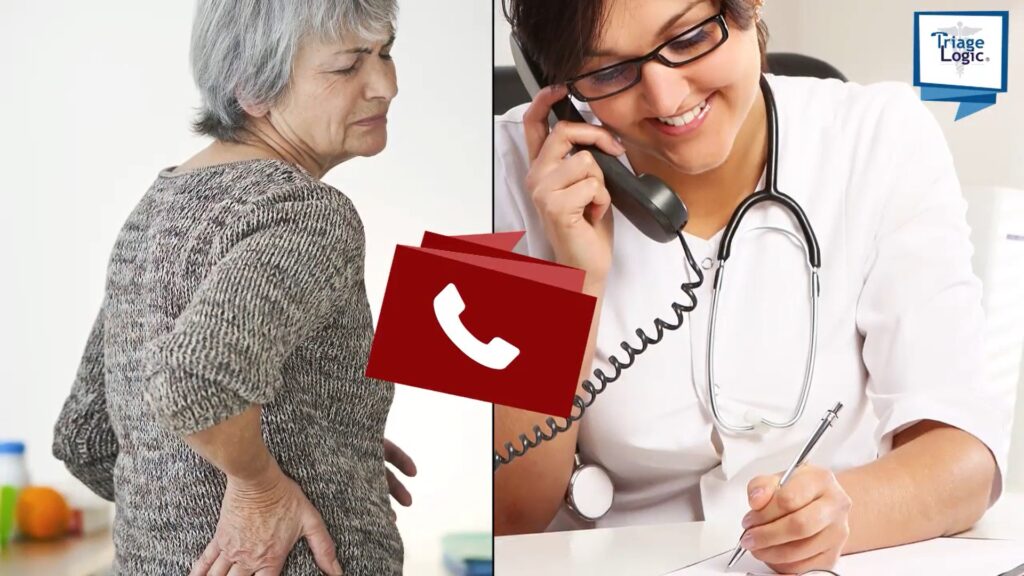When addressing adult patients with acute pain, telephone triage nurses benefit from Schmitt-Thompson protocols in two ways: 1) most older adults already have chronic conditions that complicate identifying their pain’s source; and 2) they may have multiple injuries that need to be assessed and prioritized. Schmitt-Thompson protocols ensure that responding triage nurses identify all symptoms and do so in order of severity. Let’s see how this is applied through an example scenario with a patient named Paula.
Assessing multiple symptoms
Paula calls a triage support line over the weekend because she’s fallen and injured her hip. She explains to the nurse that it was because she was out walking her dog and became entangled in its leash. Paula admits that it’s too painful to walk and that she also can’t lift her left arm very high before she feels shooting pains in her shoulder. Despite her discomfort, she states that she doesn’t want to bother her doctor both because it’s the weekend and because she’s worried about whether insurance will cover a hospital visit.
Using protocols based on severity
Paula’s hip and shoulder should both be assessed, but the triage nurse knows that the hip will take priority. Using Schmitt-Thompson protocols, the nurse also has an appropriate list of questions to ask Paula both for further information and to determine whether she should be seen in an emergency room. These include:
- Is she having any difficulty breathing or any chest pain?
- Did she hit her head when she fell?
- Is she feeling confused or disoriented?
- Is she bleeding anywhere?
- Do her toes look blue on the injured side?
- Is she experiencing numbness anywhere?
- Is she able to bear weight on her injured leg?
- Is her hip deformed?
Of the answers that Paula gives, the one that takes precedence is that she’s tried several times to bear weight on her injured leg, but it’s too painful. With this information, the nurse is ableto determine that Paula needs to get to a hospital as soon as possible. Now it’s just a matter of addressing Paula’s concerns with insurance.
Conveying the appropriate urgency
The triage nurse understands that talking to Paula requires tact and encouragement so as not to create further distress. Their response is one that calmly states the facts and identifies the best disposition for care:
“Paula, I’m glad you called me tonight. With your symptoms of not being able to bear weight on your leg, you will need to be seen in an emergency room now. I’m concerned about your safety, and I want you to stay off your leg until you are seen by the emergency room doctor. The safest way for you to get help tonight is to call 911. Are you willing to call them right now?”
The nurse’s last question is important because it elicits confirmation from Paula that she’s willing to follow the triage plan — one of the 10 Critical Steps to Nurse Triage.
It turns out that the emergency room was the best place for Paula to go. When her husband calls back to thank the triage line later that evening, he mentions that the ER staff identified that Paula had a hip fracture that would require surgery.
Thanks to Schmitt-Thompson protocols, more patients are seeing consistent, accurate dispositions that lead to positive health outcomes. These protocols are also periodically updated to reflect changes in healthcare, including COVID-19, telehealth eligibility, and scheduling telehealth appointments. If you’d like a copy of these protocols for your office, let us know by calling (800) 723-4290, or through our website.





